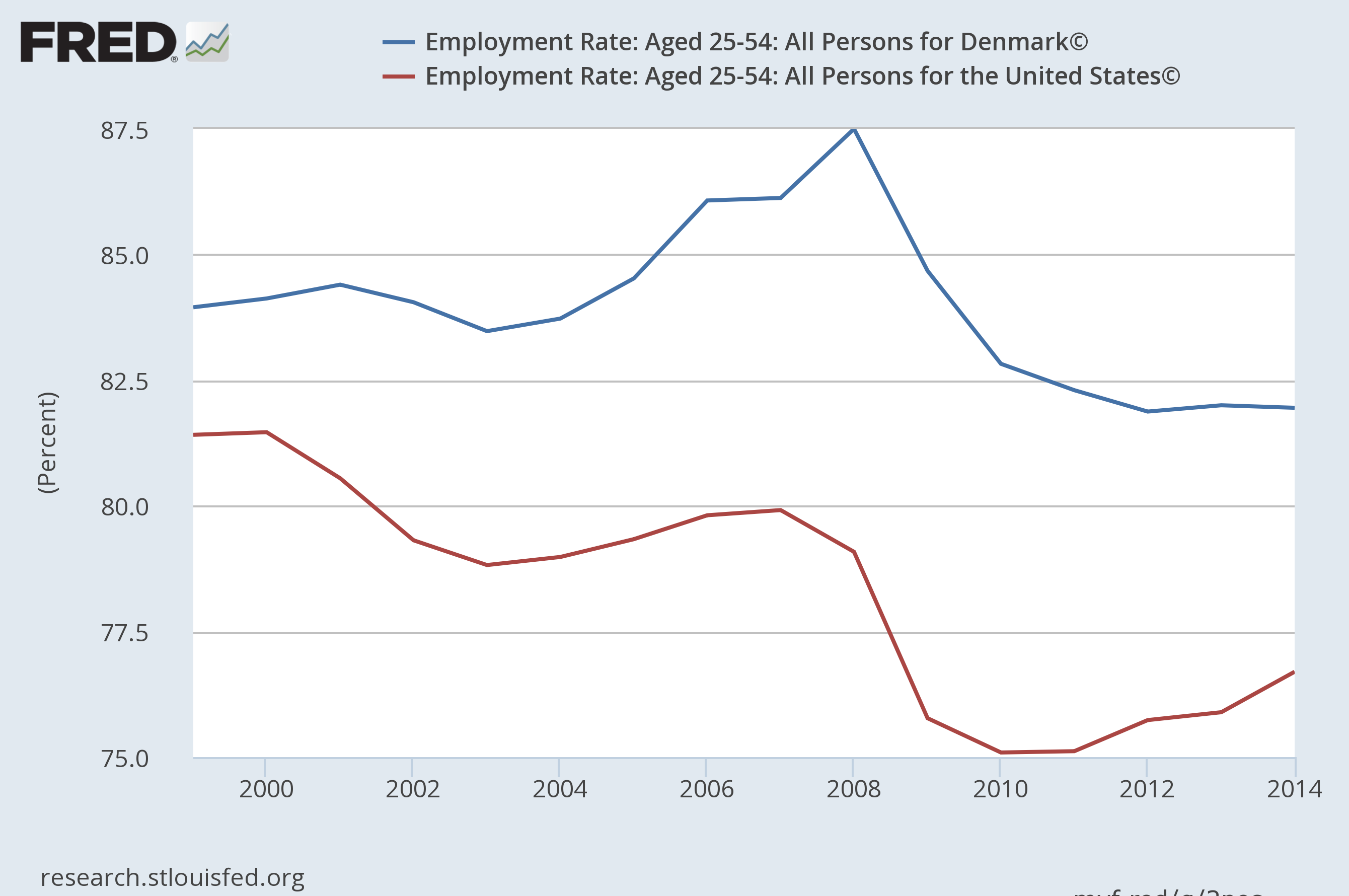November 04, 2015
The Washington Post decided to correct the positive image of Denmark that Senator Bernie Sanders and others have been giving it in recent months. It ran a piece telling readers:
“Why Denmark isn’t the Utopian fantasy Bernie Sanders describes.”
The piece is centered on an interview with Michael Booth, a food and travel writer who has spent a considerable period of time in the Scandinavian countries.
Much of the piece is focuses on the alleged economic problems of Denmark and the other Scandinavian countries. At one point the interviewer (Ana Swanson) asks:
“Danes are experiencing a rising debt level, and a lower proportion of people working. Are these worrying signs for its economy or the country’s model?”
While Denmark’s employment rate has been declining, it is still far higher than the employment rate in the United States. The employment rate for prime age workers (ages 25–54) is still more than 5 full percentage points higher than in the United States. If the rate of decline since the 2001 peak continues, it will fall below the current U.S. level in roughly 24 years. (The U.S. rate also fell over this period.) If we take the broader 16–64 age group then the gap falls slightly to 4.7 percentage points.

As far as having an unsustainable debt level, Swanson seems somewhat confused. According to the I.M.F., Denmark’s net debt as a percent of its GDP will be 6.3 percent at the end of this year. Sweden has a negative net debt, meaning the government owns more financial assets than the amount of debt it has outstanding. In Norway’s case, because of its huge oil assets, the proceeds of which it has largely saved, the government wealth to GDP ratio is almost 270 percent. This would be equivalent to having a public investment fund of more than $40 trillion in the United States.
Some of the other assertions in the piece are either misleading or inaccurate. For example, Booth is quoted as saying:
“Meanwhile, though it is true that these are the most gender-equal societies in the world, they also record the highest rates of violence towards women — only part of which can be explained by high levels of reporting of crime.”
Actually, Danish women are far less likely to be murdered by their husbands or boyfriends than women in the United States. Its murder rate is 1.1 per 100,000, compared to 5.5 per 100,000 in the United States.
Later Booth is quoted as saying:
“In Denmark, the quality of the free education and health care is substandard: They are way down on the PISA [Programme for International Student Assessment] educational rankings, have the lowest life expectancy in the region, and the highest rates of death from cancer. And there is broad consensus that the economic model of a public sector and welfare state on this scale is unsustainable.”
While Denmark is not among the leaders on either PISA scores or life expectancy, on both measures it is well ahead of the United States. And the “broad consensus that the economic model…is unsustainable” exists only in Booth’s head.
Booth is also apparently confused about tax rates around the world. He tells readers:
“Denmark has the highest direct and indirect taxes in the world, and you don’t need to be a high earner to make it into the top tax bracket of 56% (to which you must add 25% value-added tax, the highest energy taxes in the world, car import duty of 180%, and so on).”
Actually France has a top marginal tax rate of 75 percent. The U.S. rate was 90 percent during the Eisenhower administration.
Booth apparently is confused about Denmark’s public spending. He tells readers:
“How the money is spent is kept deliberately opaque by the authorities.”
Actually, it is not difficult to find a great deal of information about Denmark’s money is spent. Much of it can be gotten from the OECD’s website.
So we get that Mr. Booth doesn’t like Denmark. He tells readers that the food and weather are awful. That may be true, but his analysis of other aspects of Danish society doesn’t fit with the data.







Comments